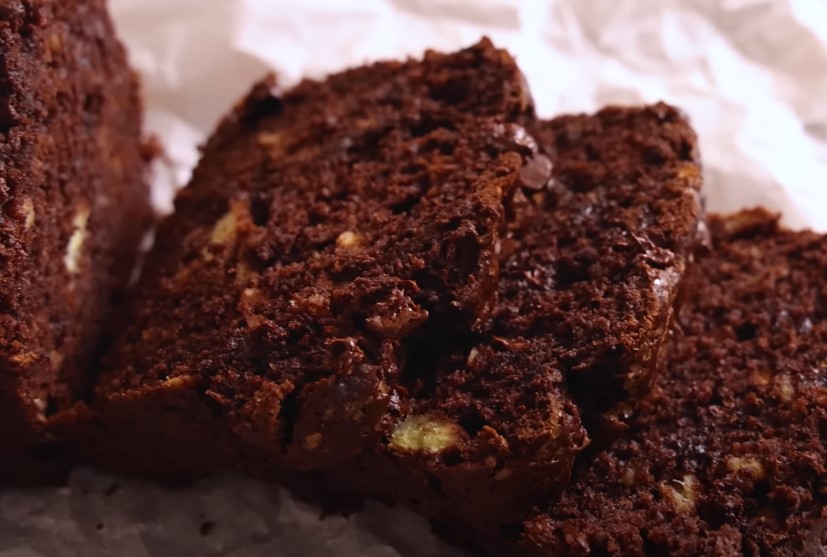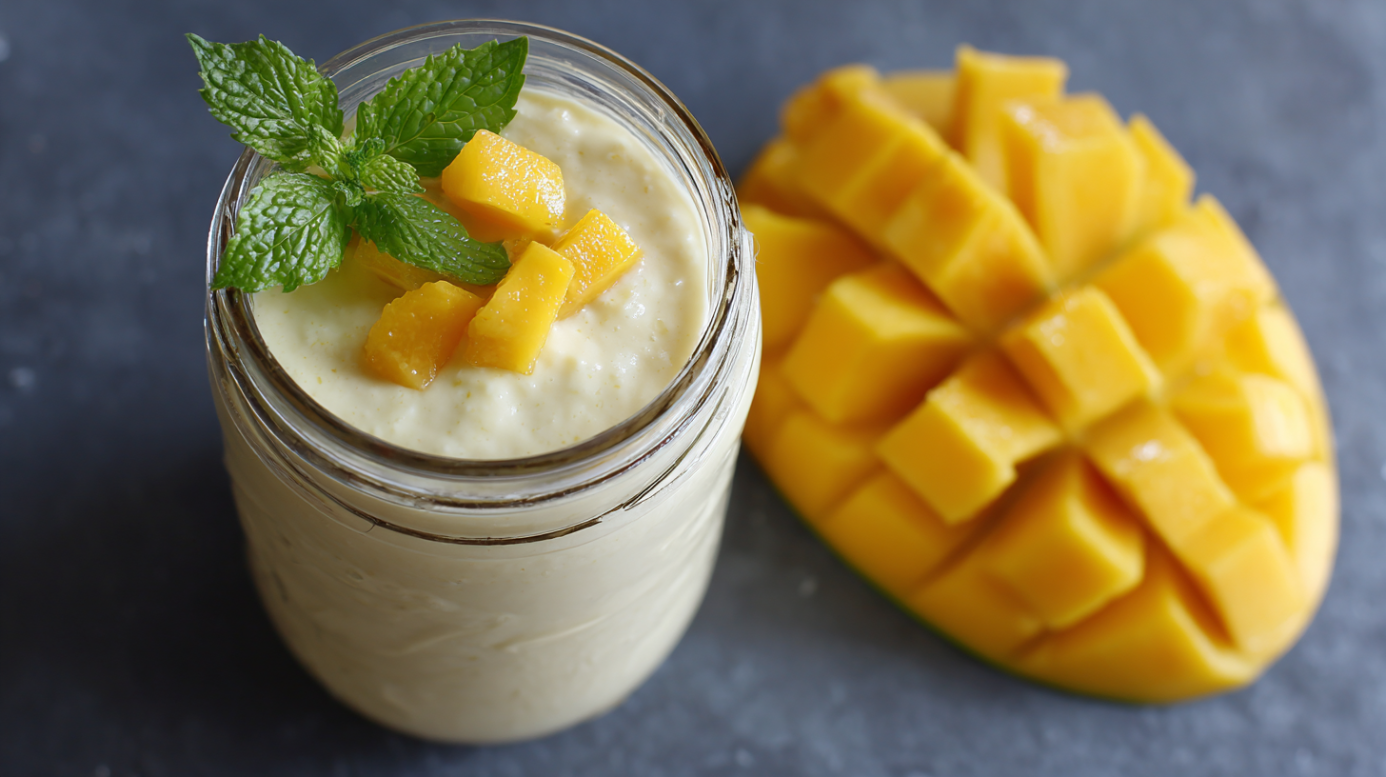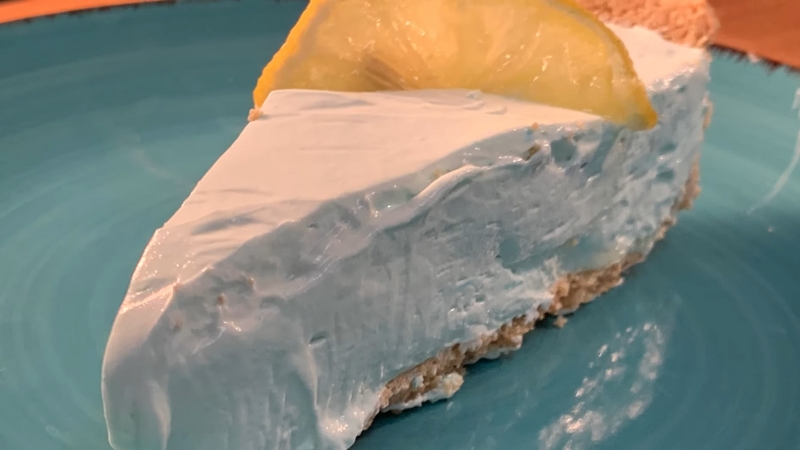Few dishes impress quite like Beef Wellington.
With its buttery puff pastry, tender beef fillet, savory mushroom duxelles, and a thin layer of prosciutto, it creates a satisfying blend of textures and flavors.
Perfect for holidays, dinner parties, or any occasion where a showstopper is needed.
Pair with roasted vegetables, creamy mashed potatoes, or a red wine reduction sauce for a complete meal.
Without further ado, let us talk about the recipe in greater detail.
| Nutrient | Amount per Serving |
| Calories | 685 kcal |
| Carbohydrates | 24 g |
| Protein | 39 g |
| Fat | 48 g |
| Serving Size | 320 g |
| Saturated Fat | 18 g |
| Polyunsaturated Fat | 3.5 g |
| Monounsaturated Fat | 18 g |
| Trans Fat | 1 g |
| Cholesterol | 165 mg |
| Sodium | 960 mg |
| Potassium | 610 mg |
| Fiber | 2 g |
| Sugar | 1.5 g |
| Vitamin A (IU) | 260 IU |
| Vitamin C | 2 mg |
| Calcium | 35 mg |
| Iron | 5.2 mg |

Table of Contents
ToggleBeef Wellington
Equipment
- Large skillet or sauté pan
- Food processor (optional, for duxelles)
- Pastry brush
- Rolling pin
- Sharp knife
- Baking sheet
- Parchment paper
- Plastic wrap
- Meat thermometer
Ingredients
For the Beef Wellington:
- 2 lb center-cut beef tenderloin
- 2 tbsp olive oil
- Salt and black pepper, to taste
- 2 tbsp English mustard or Dijon mustard
- 6 oz prosciutto slices
- 14 oz puff pastry (1 sheet, thawed if frozen)
- 1 egg, beaten (for egg wash)
For the Mushroom Duxelles:
- 1 lb cremini mushrooms, finely chopped
- 2 tbsp unsalted butter
- 1 shallot, finely minced
- 2 cloves garlic, minced
- 2 tsp fresh thyme leaves
- Salt and pepper, to taste
Instructions
- Prepare the Beef:Pat the beef tenderloin dry with paper towels. Season generously with salt and black pepper.Heat olive oil in a skillet over high heat. Sear the beef on all sides until browned, about 2–3 minutes per side.Remove from heat and let rest for a few minutes. While still warm, brush the entire surface with mustard. Set aside.

- Make the Mushroom Duxelles:In the same skillet, melt butter over medium heat.Add minced shallot and garlic; sauté for about 2 minutes.Add chopped mushrooms and thyme. Season with salt and pepper.Cook the mixture down, stirring often, until all moisture evaporates and it becomes paste-like—about 10–15 minutes.Let the mixture cool completely before using.

- Wrap in Prosciutto:Lay a sheet of plastic wrap on a flat surface.Arrange the prosciutto slices into a rectangular layer, slightly overlapping.Spread the cooled duxelles evenly over the prosciutto.Place the beef tenderloin in the center. Using the plastic wrap, tightly roll the prosciutto and duxelles around the beef.Twist the ends of the plastic wrap to form a tight log and refrigerate for 15 minutes.

- Wrap in Puff Pastry:Roll out the puff pastry on a lightly floured surface into a rectangle large enough to enclose the beef.Remove the beef from plastic wrap and place in the center of the pastry.Fold the pastry over the beef and seal the edges using a little beaten egg.Place seam-side down on a baking sheet lined with parchment paper.Brush the top with egg wash. Chill in the fridge for another 15 minutes.Preheat the oven to 400°F (200°C).

- Bake:Before baking, brush the pastry again with egg wash.Optionally, score the top with a sharp knife in a decorative pattern—do not cut all the way through.Bake for 40–45 minutes or until internal temperature reaches 125°F (52°C) for medium-rare.Let the Wellington rest for 10–15 minutes before slicing and serving.

Video
Notes
Cooking Tips
- Use a meat thermometer for perfect doneness—medium-rare is the traditional choice.
- Make sure the mushroom duxelles is fully dry to prevent a soggy pastry.
- Prosciutto acts as a moisture barrier—don’t skip it!
- Chilling between wrapping steps helps the Wellington hold its shape.
- For extra flavor, try brushing the inside of the pastry with a thin layer of egg yolk mixed with herbs.
What are the Best Serving Ideas?
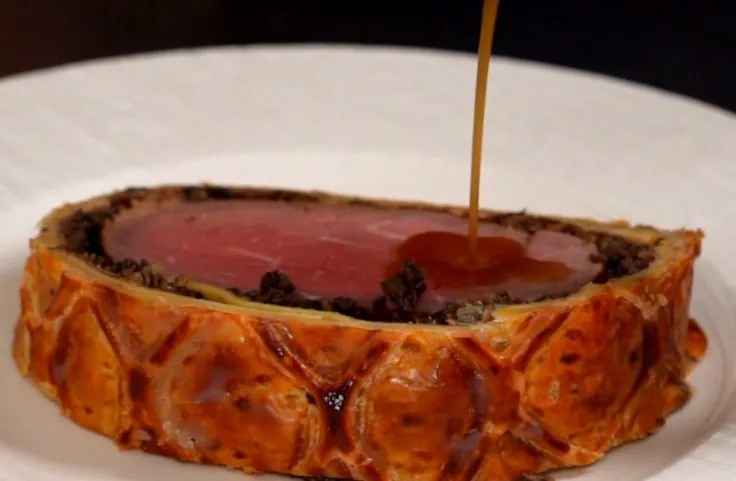
Beef Wellington works beautifully as a centerpiece, so it pairs best with sides that enhance its rich flavors without overpowering them, place the tenderloin on the cutting board and start working your magic.
Choosing the right accompaniments ensures a balanced meal that complements both the texture and taste of the dish without competing with it.
Focus on elements that add contrast, either through creaminess, acidity, or freshness, to bring out the best in every bite.
Roasted vegetables are a classic and colorful addition.
Options like carrots, parsnips, Brussels sprouts, and even beets bring earthy sweetness and a bit of caramelized crispness to the plate.
Toss them in olive oil, fresh herbs, and a touch of garlic before roasting for maximum flavor.
Creamy sides are ideal for adding richness without being too heavy. A smooth, buttery mashed potato or a layered potato gratin works well to contrast with the crisp puff pastry of the Wellington.
Consider adding roasted garlic or parmesan to elevate these staples without complicating the preparation.
To deepen the overall flavor profile, a well-made sauce can be added in moderation. A classic red wine reduction or beef jus brings umami and brightness.
Just a drizzle over the sliced Wellington or the plate adds enough moisture and flavor to enhance without overwhelming.
Fresh greens offer a necessary counterpoint to the richness of the dish. A simple arugula or watercress salad tossed with lemon vinaigrette adds a peppery, tangy bite that refreshes the palate.
If serving Beef Wellington as part of a multi-course meal, these lighter elements keep the experience enjoyable from start to finish.
Are There Any Alternative Ingredients?
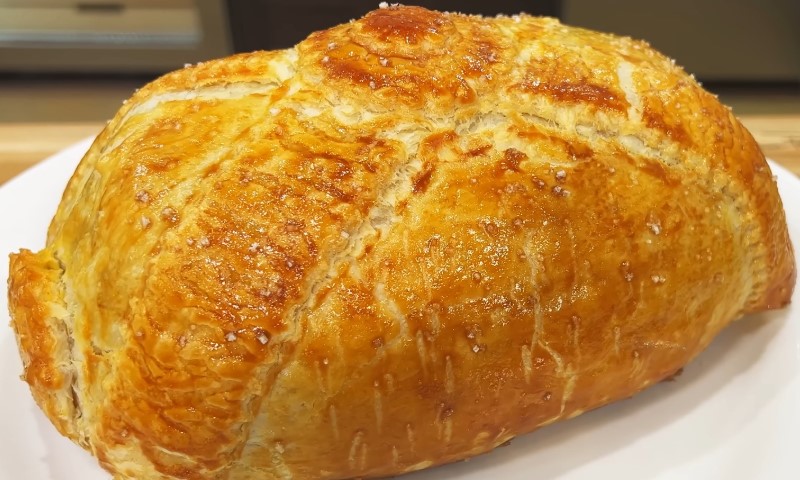
Several thoughtful substitutions can be made without losing the essence of Beef Wellington.
These swaps allow for dietary accommodations, personal preference, or simply making use of what’s available in the kitchen, all while keeping the dish satisfying and elegant.
For a more affordable version, pork tenderloin makes an excellent replacement for beef tenderloin. It’s lean, tender, and cooks evenly.
Just be mindful of internal temperature, as pork tends to dry out faster than beef if overcooked.
Vegetarian alternatives also offer creative options:
- Large portobello mushrooms – roasted and wrapped in duxelles and pastry
- Whole roasted beet – adds earthy sweetness and vibrant color
- Lentil and walnut loaf – shaped into a log and used as a meat-free filling
Prosciutto can be replaced with pancetta for a slightly stronger flavor, or omitted completely for those avoiding pork or cured meats.
For a lower-sodium version, use thin slices of cooked turkey or omit the meat layer entirely.
If puff pastry isn’t available, phyllo dough works as a crisp, flaky substitute. Use several layers brushed with melted butter or olive oil to replicate the richness of puff pastry while keeping the outer layer golden and crunchy.
The Bottom Line
Beef Wellington remains one of the most rewarding dishes to prepare and serve, combining elegance with deep, savory flavors.
With its golden pastry crust, tender center, and rich mushroom filling, it delivers both visual impact and taste.
While it may seem complex, following the steps with care makes the process manageable, even for home cooks.
Perfect for special occasions or an impressive dinner, Beef Wellington offers flexibility through serving options and ingredient substitutions. Once mastered, it becomes a signature dish worth returning to again and again.





